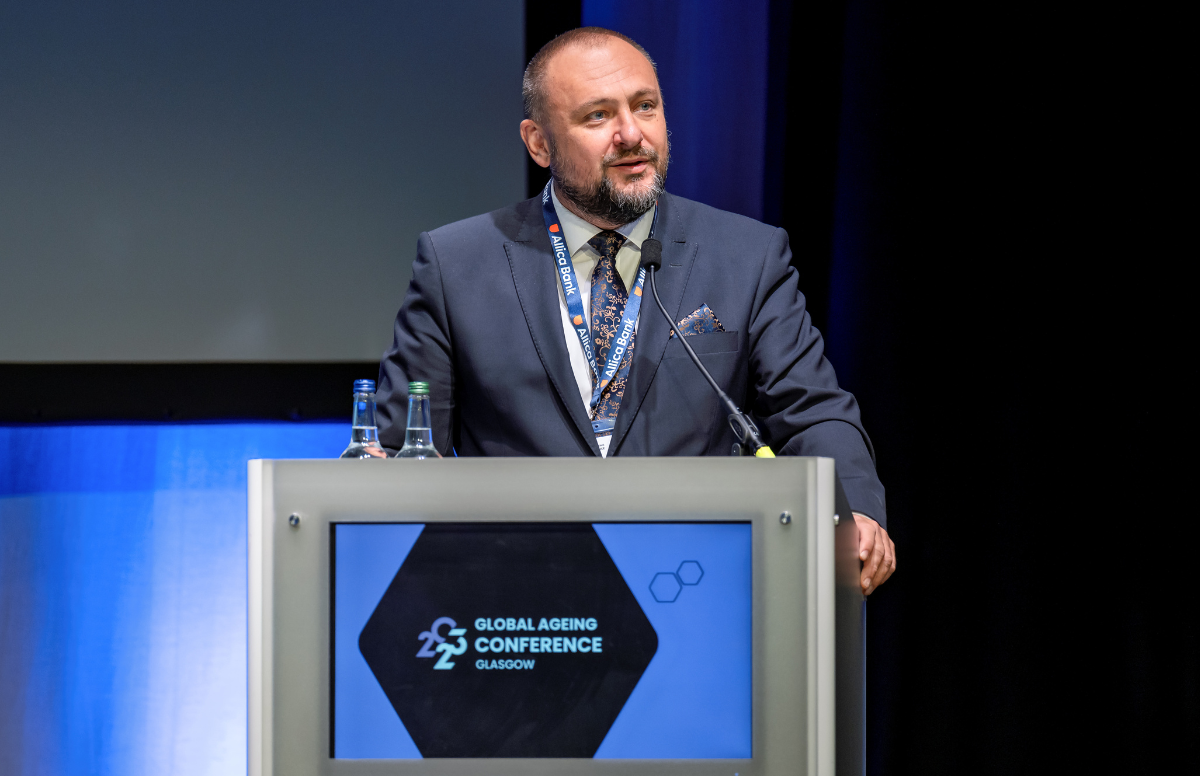The European Aging Network (EAN), headquartered in Prague, Czech Republic, is a partner and affiliate member of the Global Ageing Network. It includes 71 organizational members—most of them national professional associations—in 29 European countries, along with more than 13,000 care provider members. It was formed in 2018 by a merger of two long-established organizations, the European Association of Homes and Services for the Ageing (EAHSA) and the European Association for Directors and Providers of Long-Term Care Services for the Elderly (EDE).
After the merger, EDE President Jiri Horecky became president of EAN, and he later joined the board of the Global Ageing Network (GAN), serving as Chair in 2022-23.
Global Ageing Network spoke with Horecky about EAN and the concerns and priorities of its members.
Global Ageing Network: How would you describe the most important challenges your members face?
Jiri Horecky: There are three. One is funding—sustainability, the future of long-term care, so that it’s accessible, affordable, and available for older people. Another is workforce issues and staff shortages. The third is digitalization—cybersecurity, new technologies, and data protection. There are EAN work groups on funding and digitalisation.
Workforce is the biggest issue. Currently, we are missing, in Europe, 1.3 million people [workers]. More than 5% of all the people employed in Europe work in the social sector, representing 12 million people. There is a prediction from the European Commission that we are going to need an additional 1.6 million employees by 2050. We have work migration [programs] within Europe, and we have work migration programs from countries outside Europe, including India, Vietnam, the Philippines, Morocco, Brazil, and Nepal. But we are missing a lot of nurses, not only in the long-term care sector, but also in hospitals, and we are afraid that national governments are too reluctant to discuss solutions.
In digitalization, we are now working on three things. One is the future usage of artificial intelligence (AI) in the long-term care sector. The second is the European Health Data Space [EHDS] regulation, which should come into [effect] in 2027, 2028, and 2029, in three levels. It says that all European countries must have interoperable programs, so all the data about your health … must be shareable and readable from one country and provider to another—which is a revolutionary act that could help us also to use health and long-term care data for secondary [purposes]. Number three is a catalog of available solutions and technologies, devices and monitoring systems, and everything that is now on the European market.
As to funding, the main issue is if our costly social services and social protection systems could remain economically sustainable in the future, [which includes] accessible and affordable long-term services for older people. The rising number of older people demanding some sort of support, help, and care is opening serious discussions (also in the health care sector) and digitalisation is not solving this problem (but rather mitigating it). The key question here is, therefore, who should pay and be responsible for what in the next two decades (states, regions, municipalities, individuals and their families, or others).
Global Ageing Network: What is the role of the European Union in regulating aged care? Is it a powerful influence?
Jiri Horecky: Health care and social policy, or social protection and social care, is in the [hands of] national member governments. The European Commission, for example, introduced the EU Health Strategy in 2022 with a set of recommendations towards the member countries. These are only recommendations. The voice is strong, but they cannot tell the national governments what to do about education, about health care, about social policy.
They are using European funding to change things, [and] that is a very powerful tool. We have the so-called Resilience Fund, where there are billions of Euros, and they can be used also for long-term care and the social sector. But if you want to use the money, EU countries have to promise to [make] some changes, to raise capacities. So the European Commission is using the money to … stimulate the actions of the national governments, and then they are very strong, and they can change the working environment, generally, not only in social services.
Global Ageing Network: You are going to speak at the 2025 Global Ageing Conference in Boston in November. What do you plan to speak about?
Jiri Horecky: My topic is why we have been failing to solve long-term care problems. All over the world, we have been witnessing the long-term crisis. We have been facing workforce issues, difficulties, and impossibilities to recruit and also to retain qualified staff, funding problems that are and will be [resulting] in inaccessible and unaffordable long-term care services. And in many countries, we are also failing at integration of the social and health parts of the long-term care [system]. What are the main reasons that we got into these crises, and what (if at all) are the solutions? When we look at the triggers and reasons [behind] those crises we can also identify solutions. Yet the lack of political attention leads to ignoring those crises or [tackling] them at a too-late stage. It’s not only a lower political priority and … not so attractive [for getting] political credit. It’s mainly that in the case of long-term care, there are bypasses and substitutions.
Jiri Horecky will speak at the 2025 Global Ageing Network Conference & LeadingAge Annual Meeting in Boston, Massachusetts, USA, from 1–5 November 2025. Registration is now open.





